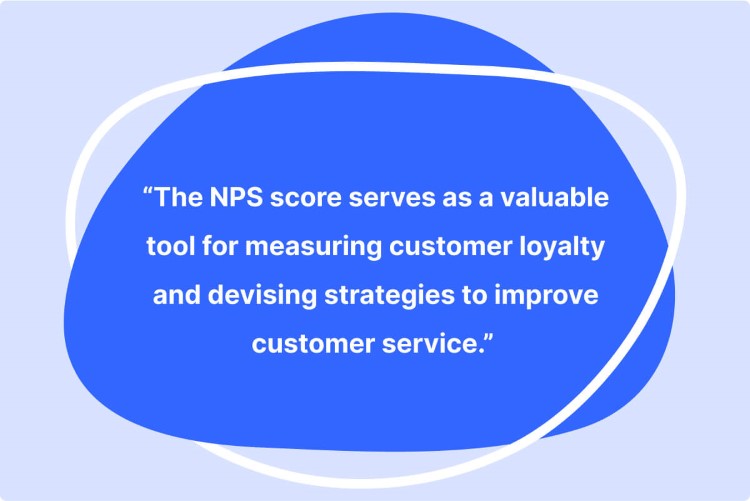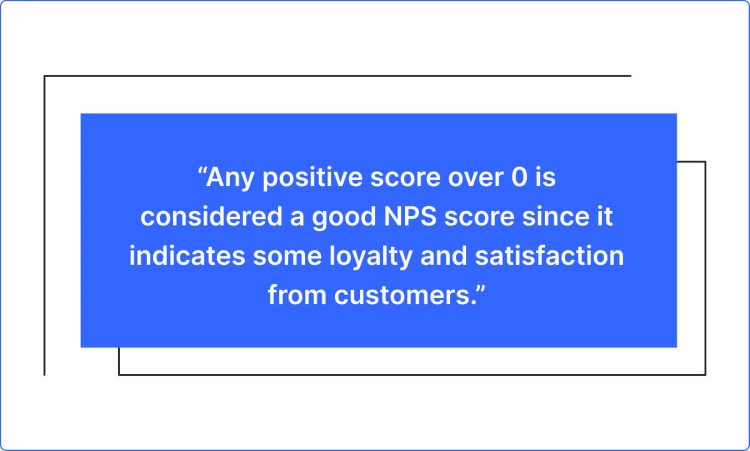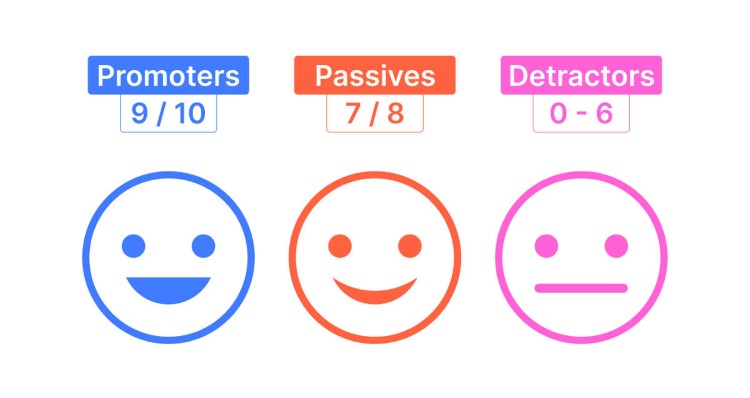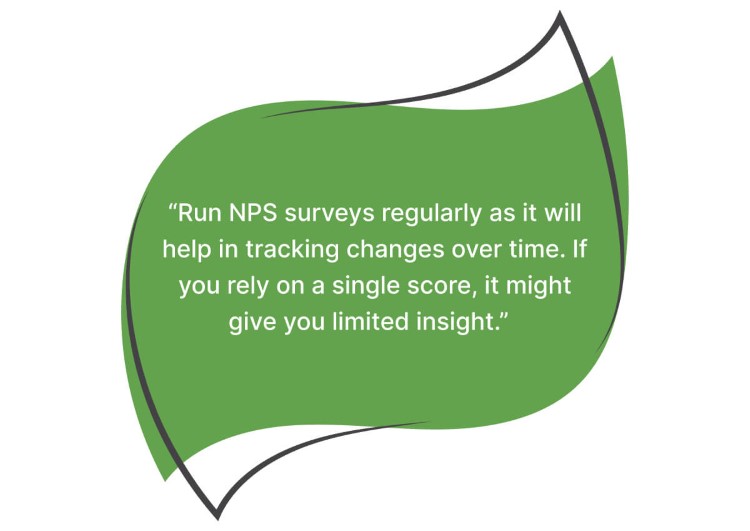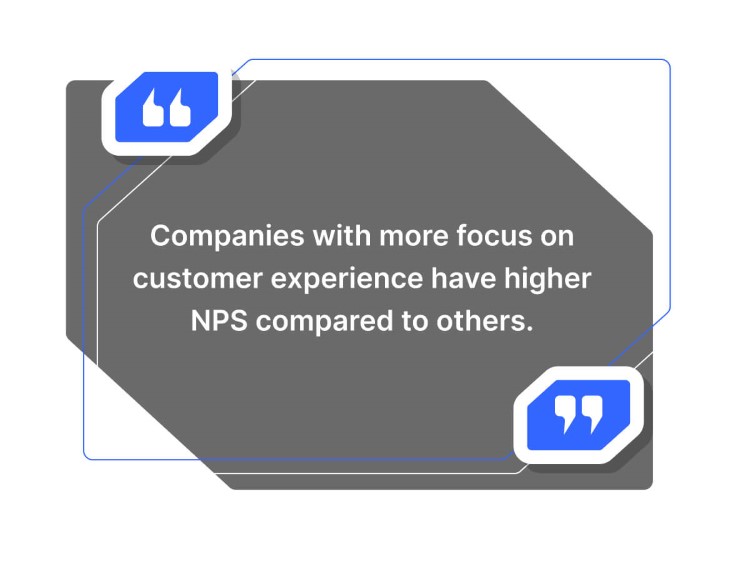It was the year 2003 when the Net Promoter Score (NPS) originated in a “Harvard Business Review” article. Since then, it has become a very useful tool to measure customer loyalty and predict business growth. Organizations across industries also use it to gather actionable feedback and drive customer-centric strategies.
This tool is invaluable for those companies that want to know what is a good net promoter score. After all, it provides a simple metric to understand how likely your customers are to recommend your brand, product, or service to others. So, companies with more loyal customers have a higher Net Promoter Score.
This tool indicates that a higher NPS score will increase organic growth through referrals and positive word-of-mouth marketing. Companies generally use NPS surveys where open-ended questions are offered to customers who give their scores. This feedback proves useful in understanding whether or not customers are happy with the company.
In this blog, we will explore everything about the NPS, how to calculate it, and the factors that contribute to a good NPS score.
But first, let’s get started with understanding what the Net Promoter Score is…
What is the Net Promoter Score (NPS)?
NPS is a widely used metric to assess customer loyalty and satisfaction. It is a customer loyalty score, ranging from -100 to 100, which is used to know how likely customers are to recommend a brand, a product, or a service to others.
NPS is measured by asking customers a simple survey question, which goes like this –
“On a scale of 0 to 10, how likely are you to recommend this company or product to a friend or colleague?”
Based on the response to this simple question, customers can be categorized into three groups:
- Promoters (Score 9-10)
- Passives (Score 7-8)
- Detractors (Score 0-6)
Why the NPS Score Matters to Businesses?
The NPS score serves as a valuable tool for measuring customer loyalty and devising strategies to improve customer service. It is used across industries to understand the level and extent of customer loyalty enjoyed by a business.
Here are the key reasons for showing why the NPS score matters to businesses –
- Using NPS, a business can know the likelihood of customers recommending them to others.
- A higher NPS score suggests that customers are more likely to make repeat purchases and make referrals.
- NPS surveys serve as customer feedback as it has comments or reasons for the scores given by the respondents.
- The Net Promoter Score is very helpful as it lets businesses make data-driven decisions to improve their products, services, and customer experience. Data is important in customer service as 76% of customers expect personalization,
- Since the NPS score groups customers as “promoters”, “passives” and “ detractors”, this kind of segmentation proves very useful for businesses in tailoring their strategies for different groups.
- A business can compare its NPS score to competitors or to industry benchmarks and assess its performance in relation to others.
What is a Good Net Promoter Score?
We know that the Net Promoter Score ranges from -100 to +100 and what is a “good score” can vary depending on the industry and business type. In fact, a good NPS for one company might not be good for another and vice versa. So, a “good”, “bad” or “neutral” NPS score can vary across industries but any positive score over 0 is considered good since it indicates some loyalty and satisfaction from customers.
To know what is a good NPS score, you need to understand a few things –
- If the NPS score is less than 0 (zero), or if it’s negative, it should be a cause of concern to the business.
- A positive NPS score, no matter what it is, should be seen as some level of loyalty.
- So, an NPS score above “zero” can be considered good.
- Any score above “50” is seen as impressive while an NPS score over ‘70’ is excellent.
- Similarly, no matter what your NPS score is, it can be termed good only when it matches or exceeds the industry average. If it does not, it can never be termed as good.
- A positive NPS score below the industry average can never be considered good
- When you have a negative score, it should be a great cause of worry for two reasons – first, it indicates you have more customers not willing to refer you to others, and second, you have more customers who might spread negative word-of-mouth about your business.
How to Know If Your NPS Score Is Good?
Whether your NPS score is good or not will depend on your specific business goals. It will be assessed in the context of your industry. You will also need to compare it to the industry benchmark as a good score is relative to your industry and goals. Here are some of the ways to know if your NPS score is good –
1. Have a Clear Understanding of the NPS Categories
To know whether your score is good, you first need to have a clear idea of the NPS metric and the different categories therein.
In the “Promoters” category, where the score ranges from 9 to 10, you will have very satisfied customers who are highly likely to recommend your brand to others.
In the “Passive” category, where the score ranges from 7 to 8, you will have satisfied customers who will be comparatively less likely to recommend than in the “promoters” category.
In the “Detractors” category, where the score ranges from 0 to 6, you will have dissatisfied customers who are not likely to recommend you to others at all.
2. Compare Your NPS Score to Competitors
The NPS score is always relative to the industry your business is part of. Even if you consider your score good, it’s not much of use unless you have compared it to the industry benchmarks. It’s important to check the Net Promoter Score of similar types of companies in your niche to get a good idea about yours. In addition, you can make use of the NPS benchmarks available for different industries to get a point of reference and be sure whether your score is good or not.
3. Monitor Your NPS Changes Over Time
You should run NPS surveys regularly as it will help in tracking changes over time. If you rely on a single score, it might give you limited insight. The key is to keep monitoring the net promoter score and see whether there is any progress. This will also help you understand whether you are improving customer loyalty.
If your NPS score continues to come positive on different occasions, it should indicate to you that the score is genuinely good and you’re on the right path to boosting customer satisfaction with your brand.
4. Analyze the NPS Score on Customer Segment Level
Even when you have a good net promoter score, you are never sure which customer segments are happier than others. Since the score is a combined value for all your customer groups, it never indicates the “not-so-happy” customers among the satisfied group. So, it’s important to analyze and assess the NPS score for different segments. This will give you more clarity on the improvements to make.
5. Also Consider Qualitative and Contextual Analysis
While the NPS score is a good indicator of customer loyalty in itself, you would be better served if you paid attention to the qualitative feedback offered by your customers. You can also gain deep insights from the customer comments and get more clarity than any numerical score. Similarly, you should see your NPS score in the context of your business, and the type of product or service you offer as these factors do have a big impact on customer satisfaction and loyalty.
Benchmark Net Promoter Score for Different Industries
Benchmark Net Promoter Scores (NPS) differ from industry to industry and it can’t be the same for two diverse fields. So it’s important to consider industry-specific standards when calculating and evaluating your NPS score. There are various factors that can contribute to a good or bad NPS and it’s therefore essential to analyze them. Here are the benchmark NPS scores for key industries –
NPS in Healthcare
The Net Promoter Score in the healthcare industry can vary from the low 20s to the mid-40s. In this sector, the NPS score never reaches the extreme top levels as there are so many factors at play there. For the healthcare sector, the quality of patient care is always a big factor. Another important factor is the ease of access to medical services.
NPS in E-commerce
NPS in the e-commerce sector ranges from the mid-40s to the mid-60s which is a very impressive number. Obviously, there are various factors that affect this score, such as ease of shopping and return process. Being a service-oriented industry, customer support is among the biggest influencers of the net promoter score for this industry.
NPS in SaaS
When someone wants to know what is a good NPS score in SaaS, the answer is, that it can range from 30 to 50. Obviously, any score below 50 indicates the need for improvement and a score above 50 is excellent. Like other industries, here too, this score depends on whether your SaaS product is niche or a supplementary tool. For the latter, a higher score is often deemed good.
Education Industry
A good NPS score in the education industry can range from mid-30s to mid-50s. Here too, this score depends on a variety of factors including the quality of education, student support, etc. Sometimes, the kind of campus experiences students have also play a big role in affecting the net promoter score for the education industry.
Tips to Improve Your Net Promoter Score
The Net Promoter Score is a dynamic metric, so it can move when you put in effort. By improving the NPS, you can take a solid step forward towards converting customers into brand loyalists. Similarly, having a string net promoter score can easily pave the way for increased brand credibility and better customer lifetime value. Here are some of the tips to improve your net promoter score –
1. Put More Emphasis on Improving Customer Experience
For most customers, a good experience matters more than the quality of the product or service you provide. In fact, people often recommend brands to others based on the type of experience they receive. That’s why companies with more focus on customer experience have higher NPS compared to others.
On the other hand, a low net promoter score suggests that your company has lots of unhappy customers who are very least likely to recommend your brands to others. So, you should focus more on identifying customer needs and understanding your customer journey if you are really concerned about improving the net promoter score.
2. Have a Robust Customer Feedback System in Place
Many businesses make the mistake of just collecting customer feedback and not implementing the changes. This strategy won’t work if your goal is to win more loyal customers. The key is to regularly collect feedback, analyze it, scrutinize it, and implement the changes if any. Apart from the numerical score, it’s equally important to use the NPS surveys to get customer suggestions and comments. The responses can be used to create a strategic approach to improving customer experience.
3. Time Your NPS Surveys Well In the Customer Journey
The timing of your NPS surveys is vital when it comes to getting genuine customer responses to your questions. If the timing is not well, you might fail to grasp the real sentiments of your audience. In fact, not choosing the right time can impact the results of the survey and you might even get a different score than you expect. The right approach is to target the survey in tune with the customer journey so that the responses can match with specific needs of the customers.
4. Consider Going Beyond the Standard Question
While using the standard NPS question is vital to understanding the level of loyalty and satisfaction they feel about your business, it’s equally important sometimes to break free from the norm and tweak the question a bit. This will serve two broad purposes – first, you can ask questions related to the more micro aspects of your business that are relevant, and second, you can give customers a chance to express themselves beyond the standard.
5. Make Sure Your Surveys are Well-Designed
There is great value in presenting a well-designed NPS survey in front of your customers. It engages them better and encourages them to share more than they would otherwise do. On the other hand, if the surveys are poorly designed such as when it has confusing scale formats or faulty buttons, it might frustrate even your most loyal customers. More importantly, when you put effort into designing the survey, it takes away any sign of inaccuracy and leaves a good impression on the audience.
6. Repair Your Relationships with Detractors
It’s important to take customer’s complaints and suggestions seriously. This is more needed with detractors who are very less likely to recommend your products or services to others. First of all, your goal should be to dig deeper and understand the reasons behind their score. You can send a follow-up mail to them or do direct interviews to gather more feedback. Make sure you reach out to the customers, understand their concerns, and take steps to fix the problem.
Final Thoughts
The Net Promoter Score is a very important metric to understand the extent and level of customer satisfaction and loyalty. When you use this metric, it gives deep insights into what customers think of you and how far they are happy with your business.
Using the NPS, you can also repair the relationships with dissatisfied customers and improve their experience with your product or service.
With REVE Chat, you can sign up and find a variety of engagement tools to connect with the customers and understand their needs better.

